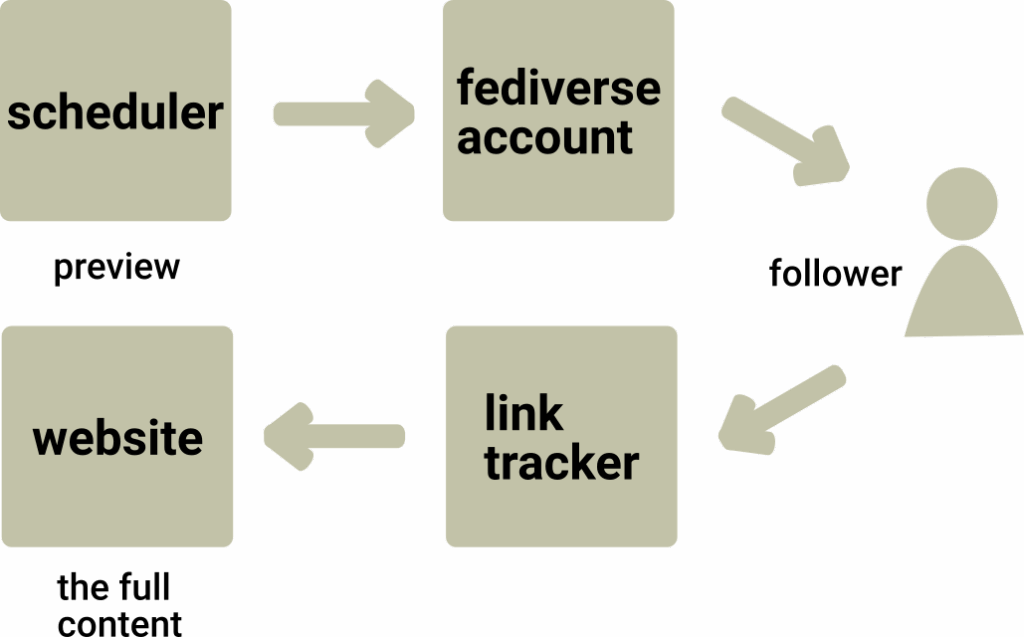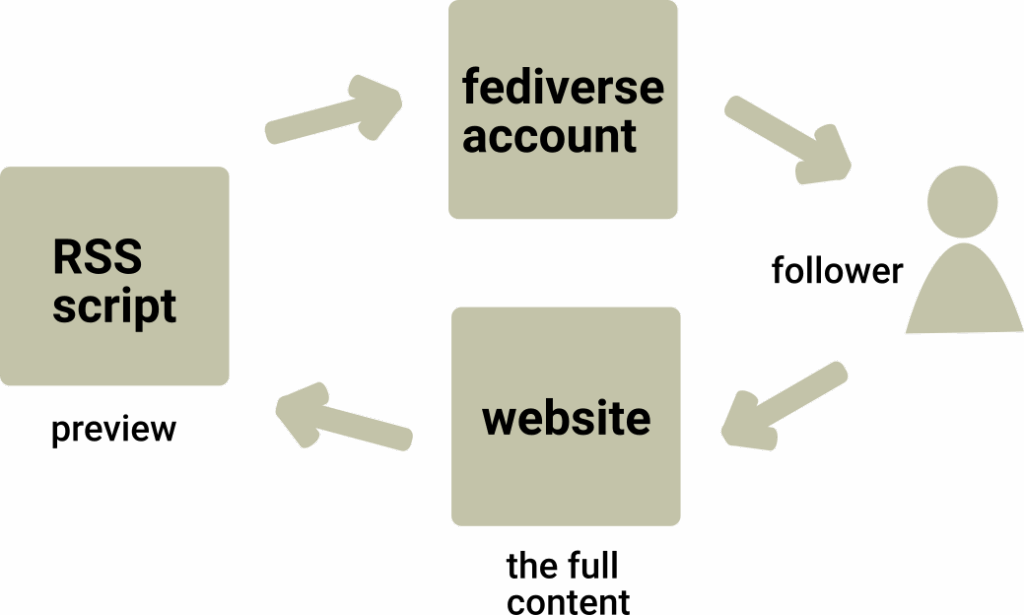Emerging Themes: Tooling Ecosystems
Our respondents make extensive use of third-party tools to engage with the fediverse. In other words, they post not only via a Mastodon or WordPress instance or their respective clients, but with anything ranging from auto-posting bots to content scheduling platforms. This post covers some of those tools and what that might mean going forward.
Generally we found that once publishers set up a fediverse presence, whether in the form of an account or a dedicated instance, their further engagement is quite light-handed. Most indicate they spend little time engaging with social media and use it primarily as a distribution platform to redirect (potential) readers to their own sites, rather than as a way to elicit commentary or feedback. Furthermore, all publishers bar one we spoke to use the fediverse as part of a broader array of social media. This, then, translates into their extensive use of automated or semi-automated tools.
Content scheduling platforms
Our respondents specifically mentioned no/low-code automation platforms such as IFTT1 but also social media content scheduling and cross-posting platforms such as Buffer and Publr. These are used to schedule and cross-post notices of new articles simultaneously to different social media platforms. Using such tools, publishers get aggregated and platform-specific insights into how many reactions, shares, and favorites posts get. These platforms sit between the publisher and the fediverse app.

Some respondents indicated also making use of link trackers such as Dub and Kutt, either as a service or as part of the publisher’s own infrastructure. These link trackers sit between the visitor and the final website. These are used to track who clicks on links and on what social platform those links are clicked on. Although many fediverse clients do not show full URLs, such link trackers can be recognized by the addition of UTM parameters to the URL, such as:
?utm_source=mastodon&utm_medium=social&utm_campaign=mastodon
Such link-trackers are often used in combination with post-scheduling tools to gauge the effectiveness of disseminating articles across different social media.
Bespoke automations
Some publishers indicated making use of bespoke (semi-automated) means of promoting articles. For instance, we learned of an example of a publisher using custom scripts to mirror different RSS feeds of the publication. We also learned of the use of a custom script used to (re)post the most popular article of the week.

A fediverse-specific practice we encountered is what one might call “boost-cycling”. That entails first publishing a post and then boosting it with the same account after a few hours. Then in later hours or days, the post is unboosted and boosted again to reach those in different time zones. Authors with multiple ActivityPub accounts, for instance a personal account and a blog, would also boost-cycle with their different accounts to increase reach and make sure the article “fans out” well enough. This has to do with federation dynamics and reverse chronological timelines.
Take-aways for developers and designers
1 – Publishers don’t post the way you think they do
When it comes to long-form publishing, publishers are not using the clients you design. Instead, they use specialist tools that connect directly to fediverse instances over the API.
In one case we spoke to a web editor who was not sure which fediverse software or instance their publication was on. This is of course not a shortcoming of that editor but rather an indication that these professionals work with different tooling ecosystems. They are not “on the fediverse” but rather “on the content scheduling platform”. Yet, these professionals are the way through which long-form publications and journalistic outlets make their way to the fediverse.
To cater to long-form publishers, developers would probably do well to focus on integrations with third party tooling over for instance adding custom long-form editing and writing environments in their software. However, that would also need additional research that looks in more detail in to those workflows. How are those tools used exactly? What affordances do these tools have that are lacking support in fediverse apps?
2 – A long-form publishing context is different from personal social media
Publishing is a process involving several steps and different people. Authoring and editing articles happens in writing environments like Google Docs. Material is then either copied into the CMS or handed over to the web editors. Disseminating articles over social media is done (semi)automatically or is handled by someone else entirely from the social media team. These are crucial differences between individual or personal use of social media and their use in long-from publishing environments. It is therefore wrong to assume that the author and the poster are one and the same. It is also wrong to assume materials are authored in the environment where they are posted. Finally as scheduling platforms show, the assumption that the article is “posted” in the environment where it eventually ends up also should be revised for long-form content.
While these findings hint at where to look next, turning these insights in to design strategies or product roadmaps would require additional research.
- A particular issue mentioned with IFTT is that while it supports Mastodon, it in fact only supports the instance mastodon.social. ↩︎
